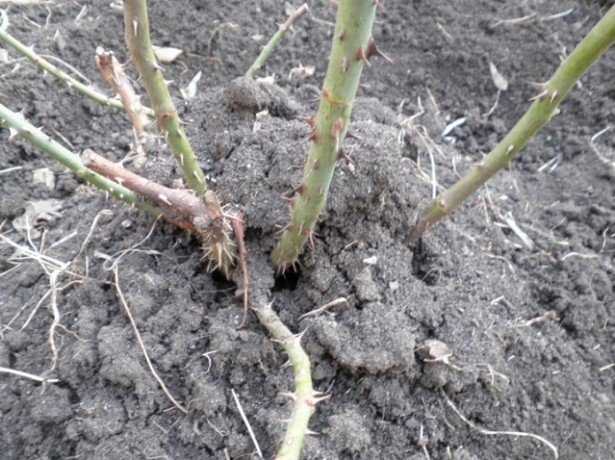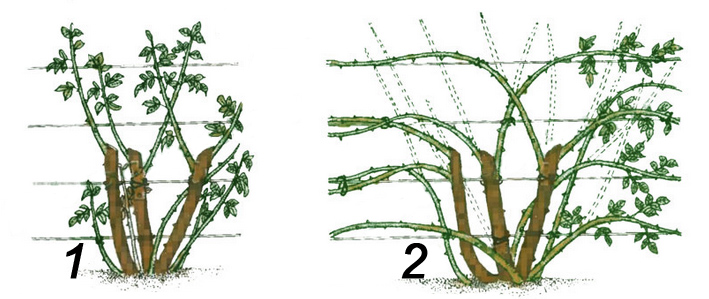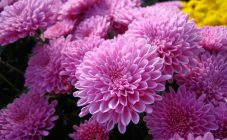Roses are very beautiful flowers, they are loved to grow in the garden not only by experienced gardeners, but also by novice amateurs. It is not difficult to grow them, you just need to know the main rules of planting and care.
Disembarkation rules
For the rose garden to grow well and bloom profusely, the place chosen for planting flowers is of great importance. These are light-loving and heat-loving plants, they need a sunny place without drafts, as protected from the wind as possible. With a lack of heat, the accumulation of nutrients necessary for the normal development of the plant slows down.
Roses are not planted in excessively moist soils. Prolonged exposure of the roots in water leads to their decay and death. Also, wet soils are cooled more, so the plant can freeze out.
Thickened plantations make it difficult to care, bushes of densely planted roses are poorly ventilated and illumined. This leads to disease and pest attacks, poor growth and flowering. The planting density is determined depending on the size of the mature shrub. Low-growing roses are planted at a distance of 35 cm, tall ones - at a distance of 50 cm or more.
Spring planting of seedlings in open ground is carried out in late April - early May, when the soil warms up to + 10-12 ° C. Also, an autumn planting is carried out, in rare cases - a summer planting.
Cut off the top by 15 cm. Cutting off the vegetative part of the seedling reduces evaporation and allows the plant to take root better. The roots are cut, dry areas are removed, leaving a rhizome 30 cm long. Then the roots are immersed in water for several hours so that they are saturated with moisture.
Rose transplant
When to transplant roses from one place to another, how to transplant them? There are several reasons for transplanting roses:
- When the plant is old, it must be transplanted, since it has an unattractive appearance, the flowers become small, dull;
- Growths of large neighboring plants or homestead buildings drown the roses, you have to transplant them to another place;
- Groundwater is close to the roots;
- Roses are transplanted if moisture constantly stands near the shrubs, since at high humidity the roots begin to rot;
- The soil is depleted or the composition is not suitable for the plant.
When is the best time to transplant roses?
In the spring, you can transplant after thawing the soil, until the buds have blossomed. However, the autumn transplantation is considered preferable, since in the next season the roses will actively bloom. It is better to transplant in early autumn, then the seedlings will have time to take root before winter. Late, in the autumn cold, this event should not be carried out - the root system that is not strong after transplantation may not survive hypothermia.
If necessary, you can transplant a rose to another place in the summer, on a cool day, by greatly shortening its stems.
How to transplant a rose from one place to another? Before transplanting roses, in the chosen place, prepare a hole of the same size as the previous one. A fertile mixture is poured onto the bottom and watered. Before digging a rose, watered abundantly around the bush.
Having dug around the plant, at a distance of 0.5 m from the neck, they carefully take it out, trying not to damage the root system. Cut off long branches and remove dry ones.
It is important to transplant the shrub with soil around the roots. The most sparing transplant is considered a clod of earth. To do this, it is worth preparing a piece of some material in order to wrap the dug roots in it and successfully transfer it to a new place.
If burlap has been prepared, you can not unwind it, and lower it into the hole with the rhizomes. It will successfully rot in the ground. In the case when, when digging up a rose, it was not possible to preserve the root system with the earth, the bare roots are examined, the damaged ones are cut off.
Having lowered the plant into a hole so that the root collar is deepened a few centimeters, sprinkle the roots with earth, tamp and water well.
Transplanting climbing roses
Climbing roses are used very often in landscape design. They decorate arches, gazebos, walls of houses. When can old climbing roses be replanted? A mature plant is transplanted in the event that the place for it was not very well chosen. Transplanting climbing roses is more complicated, but the basic principles are the same as when transplanting simple roses. You can transplant before bud break, as soon as the ground thaws, or no later than September, so that the plant has time to take root in another place before winter.
With an autumn transplant, the plant is prepared in advance. Per month, in August, the stems are pinched to accelerate the lignification of the shoots. The plant is fed so that the roses grow stronger and are saturated with useful substances.
A week before transplanting, climbing roses are removed from the supports. Old shoots are removed, young ones - protect them from damage as much as possible.
The roots are cleaned of soil, rotten and damaged roots are removed.
At the prepared place, a layer of drainage and humus mixed with earth is poured into the planting hole. The plant is placed in a hole so that to the south it is turned by the side that it grew earlier.
The root collar is buried up to 3 cm into the ground. Having covered the hole with earth, it is tamped tightly and the bush is watered with two or three buckets of water. A few days later, when the earth settles, it is poured to the desired level.
Climbing varieties hibernate under cover, they are removed from the support and laid on the ground. It will take several days to bend an old rose to the ground. This process should take place at positive temperatures. In light frost, the stems become fragile and break. Cover the rose in dry, calm weather, when the temperature drops to -5 ºC.
Further care of roses
During the season, branches are pruned several times. Pruning stems after winter is the most important, in young shrubs they are pruned into 2-3 buds, in adults 5-7. Summer pruning encourages re-blooming. Wilted flowers with a small part of the shoots are removed. Autumn - prepare roses for winter. With sanitary pruning, rotted, broken and diseased branches are removed, with shaping ones - they give the shrub a beautiful, lush appearance. Removing old shoots rejuvenates roses.
- nitrogen is introduced at the beginning of the growing season for the growth of green mass and strong shoots;
- phosphorus with potassium is necessary for the formation of peduncles;
- magnesium - during the budding period;
- iron - for the prevention of diseases in roses.
You need to know some rules on how to feed plants:
- The first feeding is carried out during the awakening of the buds, the second - when the buds are tied. After the first wave of flowering, the roses are fed so that they begin to bloom again;
- Organic and mineral fertilizers are important for roses. First, mineral is added, after a certain period - organic. They complement each other, helping the rose to "saturate" with useful substances. The dose of fertilizing cannot be exceeded, the excess can have a bad effect on the plant and it will weaken.
Watering the flowers should be done regularly, as a lack of moisture can lead to wilting and partial shedding of leaves, slowing down the growth of stems. The inflorescences will become small, and the color of the petals will fade.
After watering, the soil under the bush is loosened. In order not to loosen the soil every time, they mulch with humus, tree bark, needles. Organic mulch retains moisture and warmth in the root system and serves as an additional plant nutrition.
Roses can be attacked by pests and diseases. Damp and rainy weather, poor ventilation of the rose garden, overgrowth of plantations, damage to the plant can contribute to their occurrence.
It is important to identify diseases at an early stage and take the necessary measures. You can fight pests and diseases by using insecticides or folk remedies.
To grow constantly blooming roses, you need to make certain efforts to care for them: plant the seedlings correctly, feed them on time, correctly cut the stems, carry out prevention and pest control, cover if necessary for the winter and open them in time after wintering.















